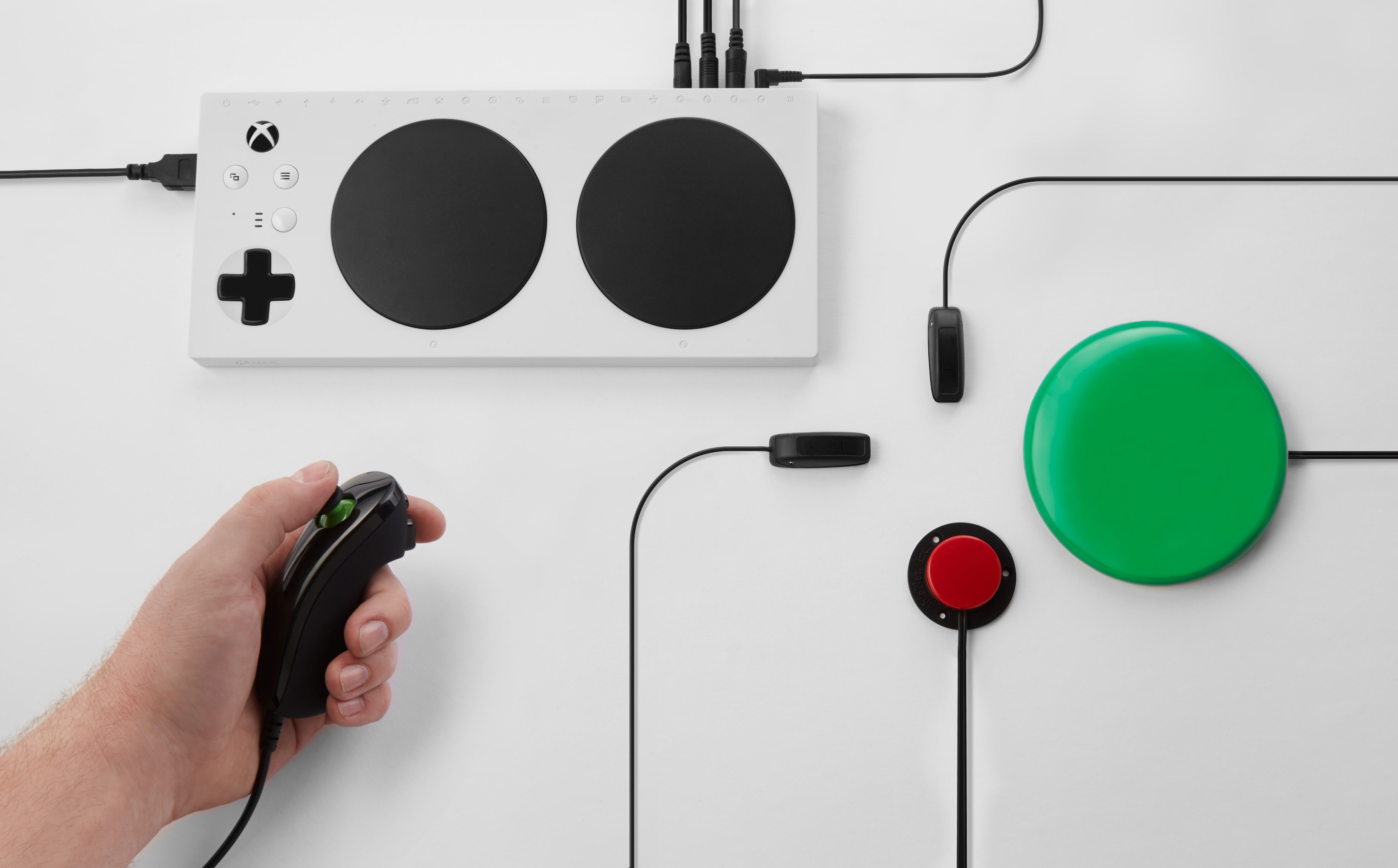While gaming is a hobby that millions around the world enjoy, accessibility and providing alternative control options for those with disabilities has long been a challenge for a portion of the gaming audience, with Microsoft sharing more information on the making of its new Xbox Adaptive Controller.
In conjunction with its official reveal today, Microsoft has published a detailed look at the making of the Xbox Adaptive Controller, which is the company's new controller hardware that specifically caters to gamers with disabilities or limited mobility, by allowing them to completely customize their own necessary control setups or configurations with external devices.
In the feature, Microsoft explained that the development of the Adaptive Controller goes as far back as 2014, when engineers from Microsoft noticed a Twitter post of a customized game controller from the nonprofit organization Warfighter Engaged, which provides game consoles and devices for war veterans.
From there, Microsoft learned from the organization of the difficulties that injured veterans can face when attempting to play video games, such as various physical and mental disabilities that may prevent them being able to use traditional gamepads or controller drvices. This knowledge prompted Microsoft employees to begin experimenting and prototyping with alternative control options to suit the needs of gamers with disabilities. At Microsoft's 2015 Ability Summit, this included prototyping a device that utilized the Xbox One Kinect Sensor to translate gamers' movements into corresponding inputs from an Xbox One controller.
From there, later prototypes and test builds explored the idea of a unit (attached to an Xbox controller) that would allow users to plug in other buttons, switches, or input devices to allow control options not normally serviced by a traditional controller setup. From there, the project continued to gain momentum after Microsoft's "Gaming for Everyone" initiative was put into effect in 2015 for its hardware and games to provide a more inclusive environment for gamers of all kinds to enjoy.
From other, the project continued to develop after the introduction of the "Copilot" feature on Xbox One last year, which allows for players to utilize two Xbox One controllers as one, so that players could play games together without swapping controllers back and forth between one another. This feature eventually led Microsoft to the idea of developing a standalone controller unit (rather than attached to an Xbox itself), though one of the challenges were that resources for developing an adaptive controller were limited at the time due to work being done on the Xbox One X, while the controller "wouldn't necessarily generate a significant return on investment."
However, Microsoft's post on the Adaptive Controller's making elaborates that the project was clearly one that Microsoft employees were passionate about making happen, despite its more limited appeal and potential audience on a business-level. Ultimately, the project moved forward through the help of numerous Microsoft employees to where it is today, after working with numerous organizations like AbleGamers, SpecialEffect, and more to figure out the design and accessibility of the controller, and to make it as compatible as possible to suit the specific needs of gamers with physical or mental disabilities.
Likewise, other points that Microsoft brought up in its post on the making of the controller was that affordability and design were two features they took great attention towards, as other accessible gaming devices in the market can be hundreds (or even thousands) of dollars. Likewise, Microsoft also took care into making sure that the device felt like an Xbox product and that didn't look "toy-like," unlike other accessibility devices.
Xbox head Phil Spencer explained in a statement on the Adaptive Controller's development that the Xbox Adaptive Controller represents the positive impact technology can have, when that technology is designed to include as many people as possible. He added that "whether someone lost the ability to play or they've never been able to try gaming in the first place, this controller will hopefully make having fun in the gaming community a possibility.
In the post, Microsoft also provided a few more details on what the Adaptive Controller will offer to gamers utilizing the device. Specifically, the Adaptive Controller allows users to create up to three different gaming profiles on the controller itself, so that users will not have to reset the device when changing games, unlike some other third-party controllers or devices. Even the packaging is being designed in a way that will provide easier accessibility to opening and taking out the device, according to Microsoft's breakdown of the controller.
The controller will contain 19 jacks on the front of the unit, and the linear layout of the jacks was intentional in order to provide easier accessibility to gamers versus having the inputs stacked on top of one another, along with symbols at the top to identify each individual port and their corresponding control input. Likewise, the controller will also provide three threaded inserts that allow the device to be mounted with standard hardware to wheelchairs, lapboards, or desks.
The Xbox Adaptive Controller will officially launch later this year for $99.99, and will be sold exclusively through the Microsoft Store.

